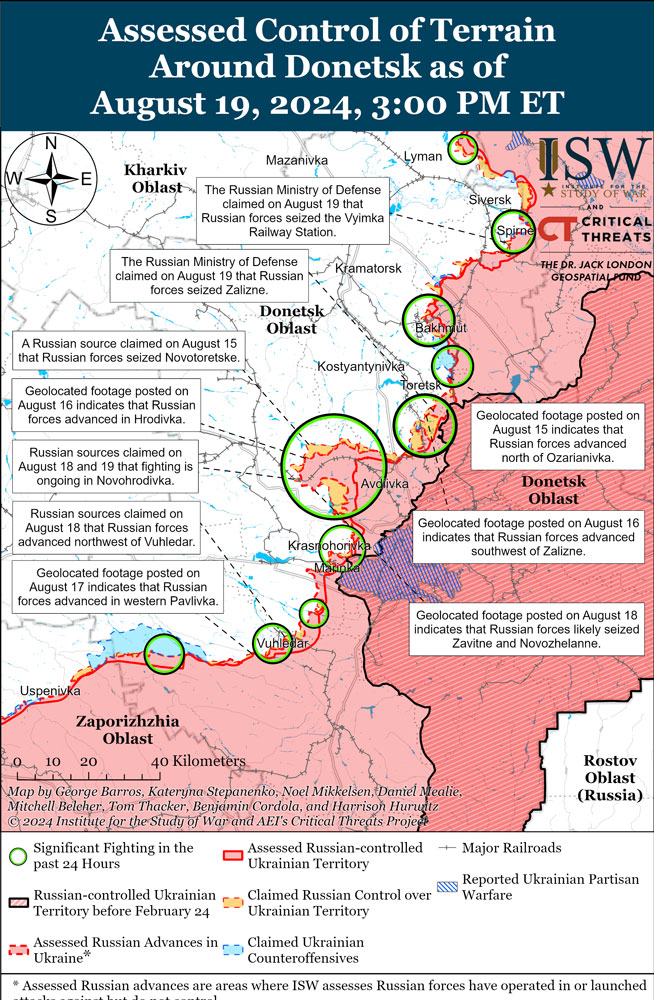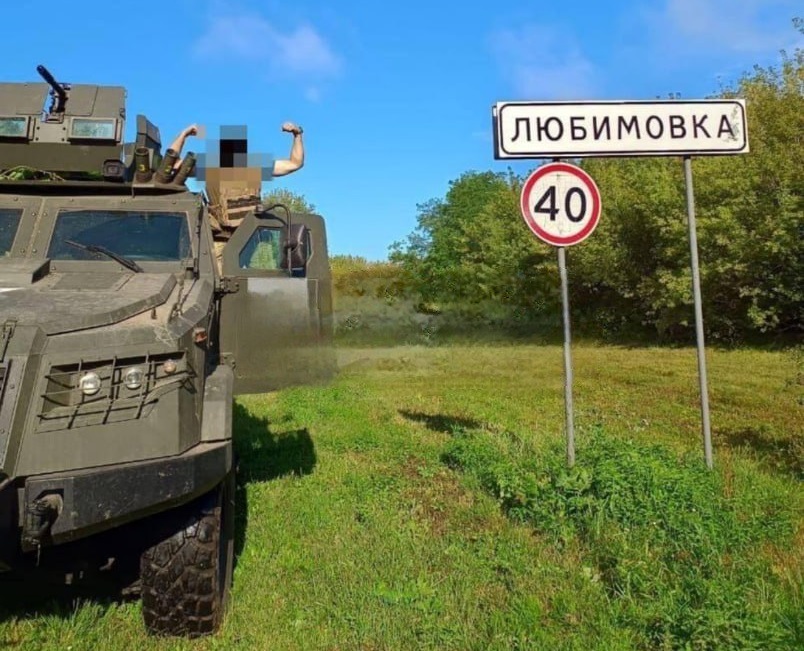According to a report from the Sumy Regional Military Administration, Russians continued shelling the region across the border on 19 August. The BBC Russian Service noticed that the Sumy administration’s data shows that Russian forces are shelling less from Russia’s Kursk Oblast, where Ukraine is conducting a military operation for two weeks now, and more from Belgorod Oblast.
The Sumy Regional Administration detailed the attacks on several border communities. The Krasnopil community, which borders the Belgorod Oblast, saw the heaviest bombardment, with 79 mortar strikes, 48 artillery shells, 8 rocket attacks from multiple launch rocket systems, 8 unguided air-to-ground missile strikes, and 4 FPV drone attacks.

The Velykopysarivska community, also bordering Belgorod, faced intense shelling, with 23 mortar strikes, 18 artillery shells, one glide bomb, 9 rocket attacks from helicopters, and 4 drone-dropped munitions.
In comparison, other communities like Hlukhiv and Seredyno-Buda saw fewer attacks, with 6 and 10 FPV drone strikes respectively, as well as some mortar and air strikes.
Regarding the southern front, Dmytro Likhovii, a representative of the Tavria Operative Strategic Grouping of Forces, stated in a televised commentary that the intensity of hostilities has decreased in the area.
“Compared to last week, the intensity of hostilities has decreased. In Zaporizhzhia Oblast, on the Orikhiv and Huliaypole directions, there have been no combat clashes for the third day,” Likhovy said.

Over the past three days, the number of attacks in eastern Ukrainian Donetsk’s Pokrovsk sector has increased, while other Donetsk sectors have seen relatively consistent numbers, as deduced from the General Staff’s morning situational reports. In the Pokrovsk direction, 19 August saw 63 attacks, compared to 45-46 on the two previous days.
On 18 August, Ukrainian President Volodymyr Zelenskyy revealed for the first time that the military incursion into Russia’s Kursk Oblast, launched on 6 August, aims to create a buffer zone to prevent further attacks by Moscow across the border.
Another goal of the incursion is to divert Russian forces from other fronts, where they maintain incremental gains through numerical superiority. Various reports suggest that Russia is attempting to deploy more conscripts from across the country to Kursk, with only a limited number of troops being redirected from active battle zones inside Ukraine to avoid compromising its offensive potential in key areas, where it gains ground through mass suicidal frontal assaults.
Related:
- Zelenskyy: Ukrainian Forces control 92 settlements in Russia’s Kursk Oblast
- Frontline report: Russia initiates POW exchange talks after Ukraine captures 2,000+ Russian soldiers in Kursk Oblast
- The Economist: Western allies were deliberately left in the dark about Kursk incursion plans
- Zelenskyy says Kursk operation’s goal buffer zone in Russian territory




